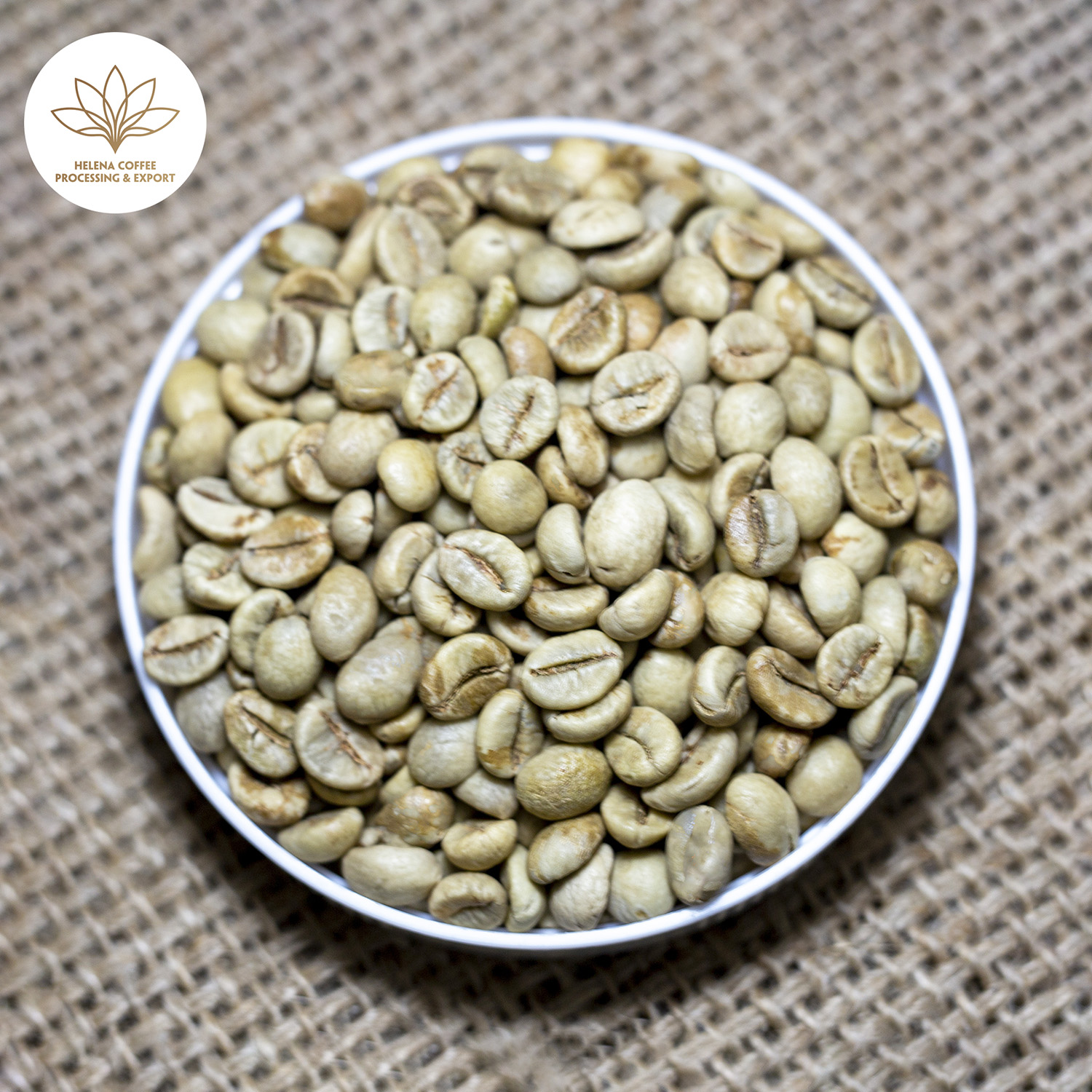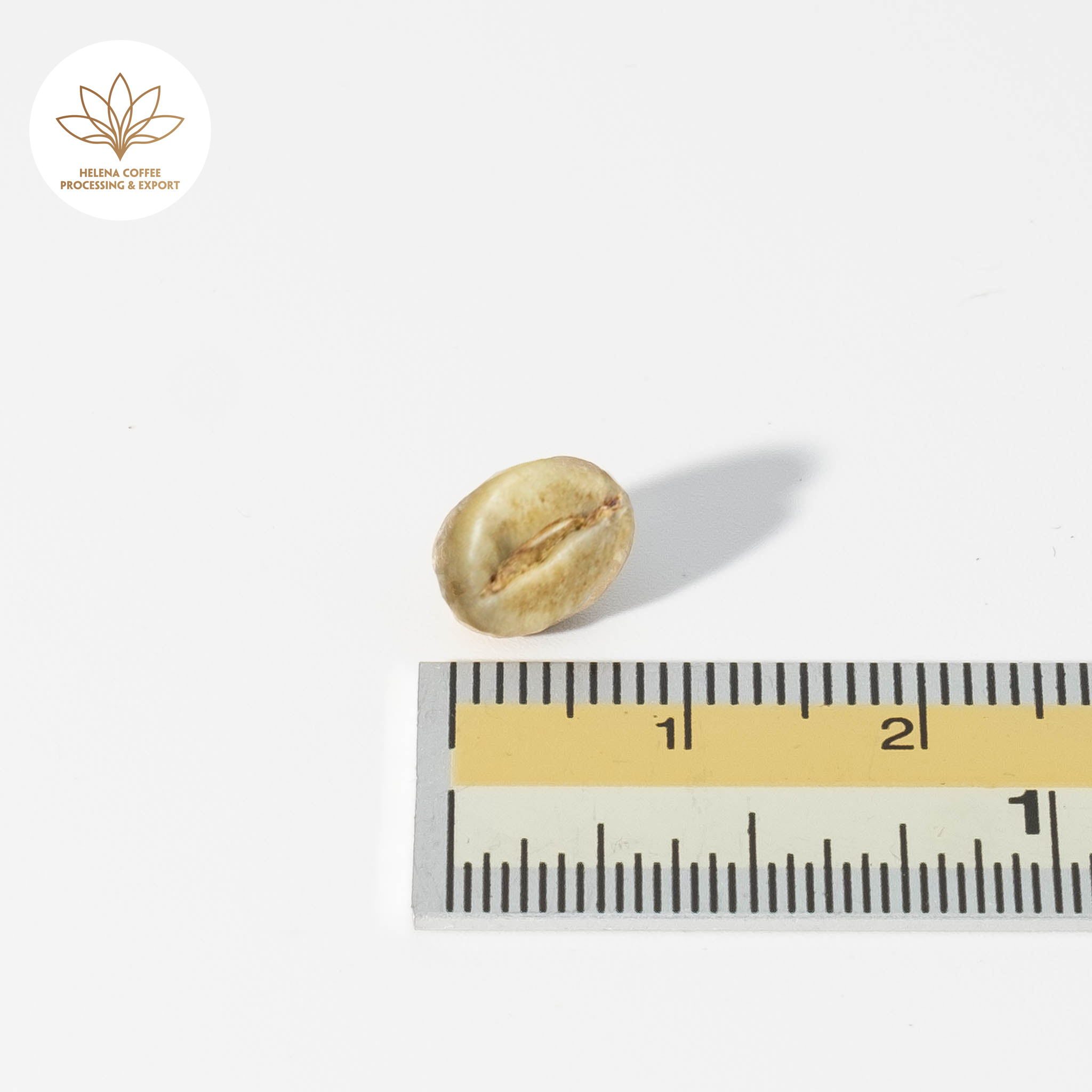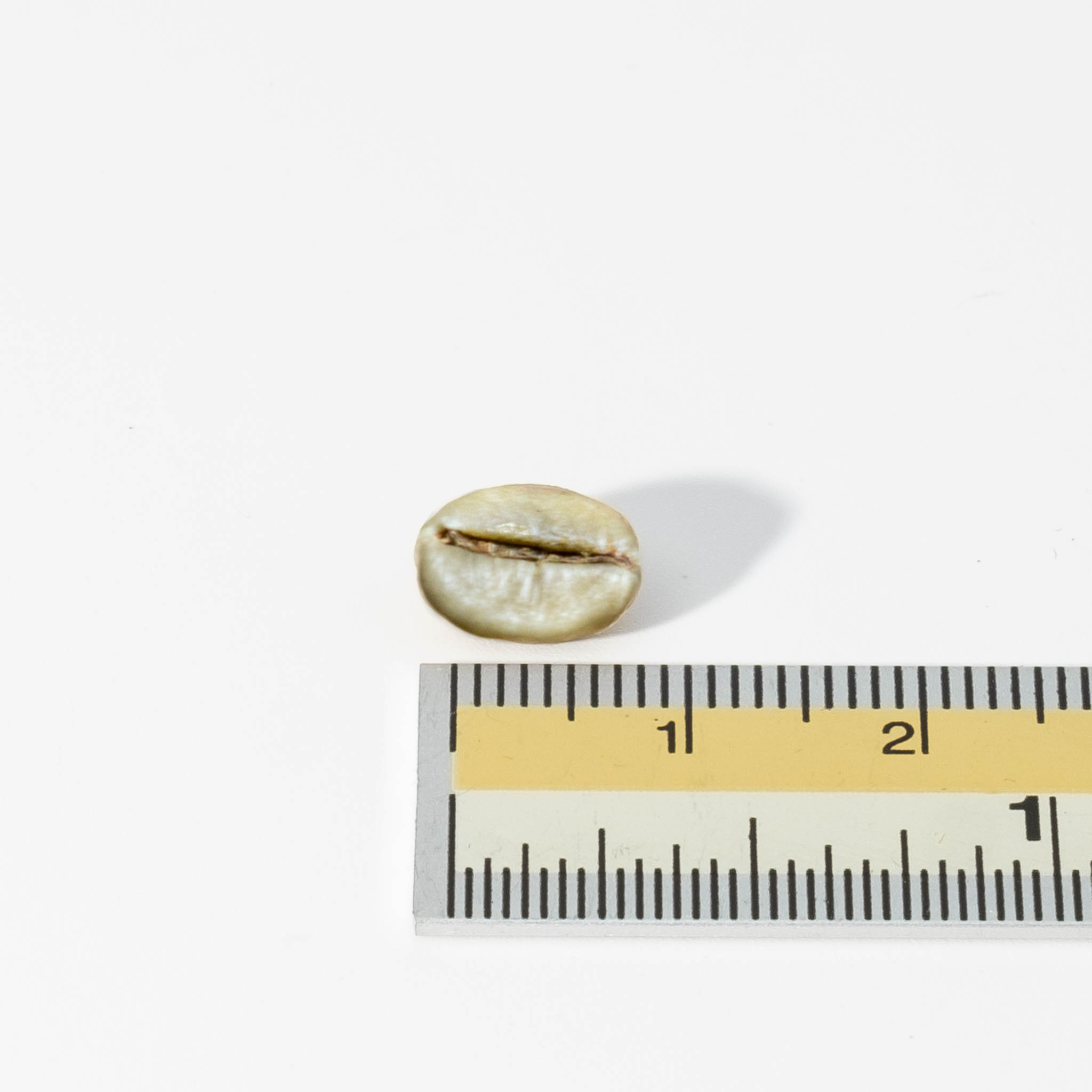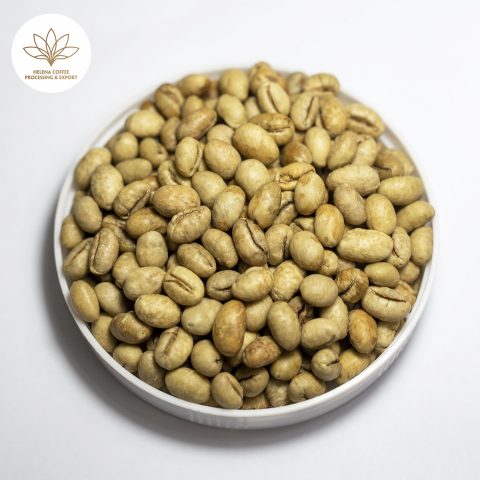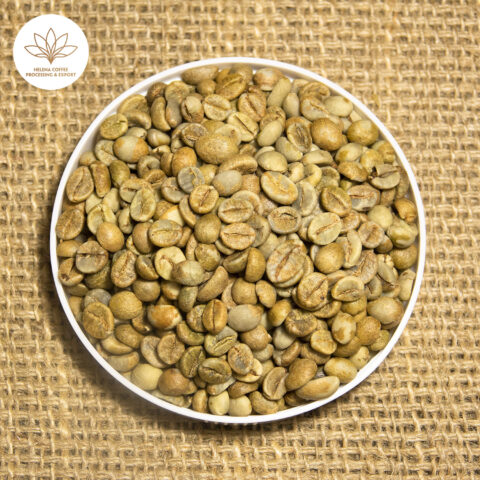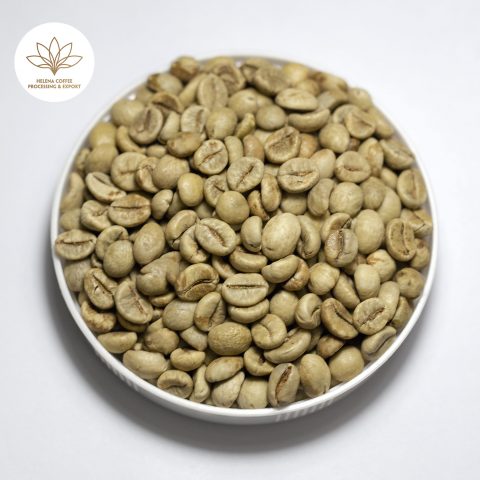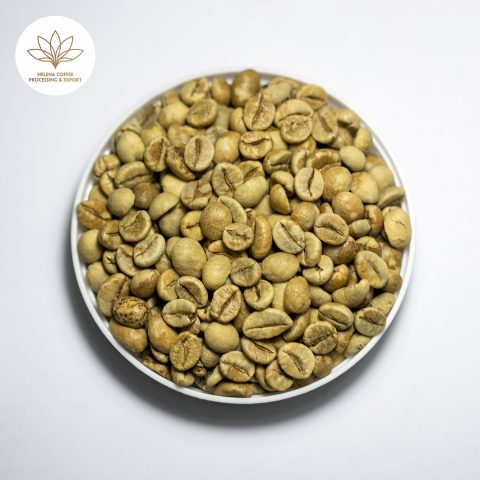Vietnam Wet-processed Robusta Coffee Beans (S16, S18)
- Home
- Products
- Vietnamese Robusta Green Coffee Beans
- Vietnam Wet-processed Robusta Coffee Beans (S16, S18)
Vietnam Wet-processed Robusta Coffee Beans (S16, S18)
$4.00 $3.79
- Variety: Robusta
- Region: Daklak
- Elevation: 800m
- Processing: Wet Processing (Fully-Washed)
- Ripe Rate: 98-99%
- Moisture: 12.5%
- Foreign Matter: 0.1%
- Black: 0.1%
- Broken: 0.2%
- Rate on Sieve: 90%
- Bean size (Sieve): S18, S16
- Capacity: 7000 tons/year
- Price per kilogram: $/kg



Coffee Beans Product Information
Vietnam Wet-processed Robusta Coffee Beans –The process of creating this product is truly a feat. All products are 100% ripe fruit: because in the process of peeling, the machine has floored the jar, only ripe fruits can separate the outer shell.
Moreover, the coffee is manually sun-dried, so the process of evaporating water slowly and keeping the original flavor is no exaggeration, so it is no exaggeration to say that this is the world’s best ROBUSTA product.
With the wet processing process, Robusta coffee beans are selected right from the time it is still in the coffee fruit. This helps to remove the poor quality, poor consistency coffee beans from the very beginning, helping to keep the coffee beans evenly colored in the roasting batches.
So, in terms of sensory, wet processed Robusta coffee will have a more evenly roasted color, and in terms of perception will give a balanced flavor, deep aroma, and clear and long aftertaste. In particular, coffee does not have the musty smell of unripe young coffee.
What is the difference between wet processed Robusta coffee?
The wet pre-processing method gives Robusta coffee a significant improvement in flavor.
First of all, it must be mentioned that the picking is ripe. Since wet processing is more expensive, resulting in better coffee quality, coffee cherries put into wet processing need to be harvested ripe and of the highest quality. That makes the coffee beans have a more uniform quality, and the quality of the beans is better.
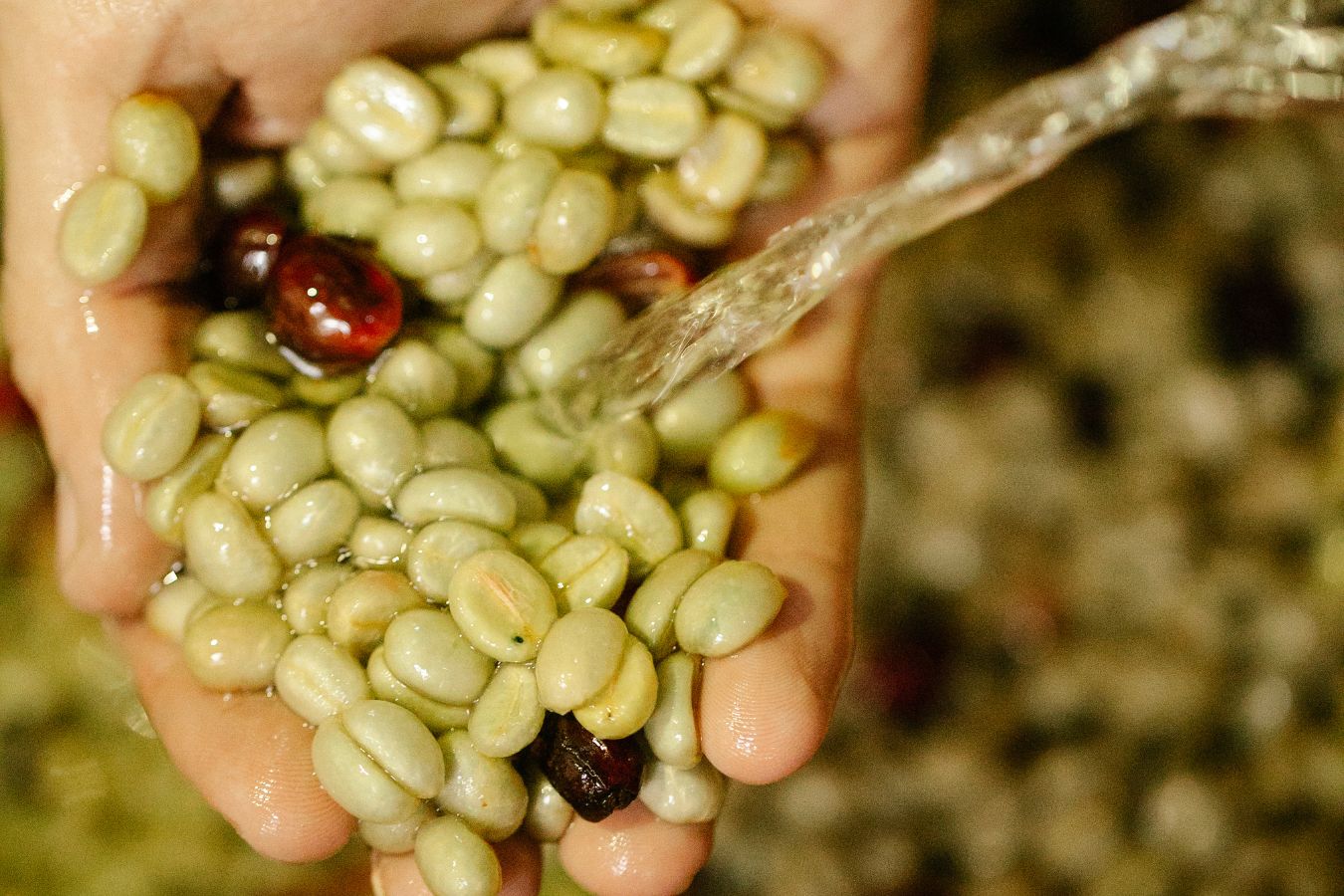
Next, the wet processing method retains the natural flavor of Robusta better. Therefore, the wet-processed Robusta after roasting has a better taste than the dry-processed Robusta. The scent is more intense, deeper. The taste is not bitter. Especially the aftertaste is very gentle and overall very balanced. Overall very pleasant to drink.
Another difference you can notice right away when looking at the grain surface of wet-processed and dry-processed Robusta is the uniformity of color. Wet-processed Robusta has a much higher color uniformity after roasting.
Robusta beans have a much higher acid content than Arabica coffee, when combined with wet processing, there will be a residual taste. Sour processing is very harsh, and unpleasant in sensory perception, so most of them are dry processed.
Wet processing (also known as the wet fermentation – Wet Process) is a process of processing shredded coffee including the steps: of rubbing coffee cherries. to remove the pods; soak for the mucilage to ferment and then disintegrate; Finally, it is dried to obtain parchment coffee. This is a common method in countries that specialize in the cultivation of high-quality Arabica varieties in Central & South America or East Africa.
After harvesting, coffee is usually processed by two methods: dry processing and wet processing. Wet processing is usually applied to high-economic-value coffees such as Arabica. Robusta coffee is usually dry-processed. However, you can apply the wet processing method for Robusta coffee. So how is the wet processing of Robusta coffee done?
Learn about the Wet processing of Robusta coffee
The wet processing method produces higher-quality coffee products due to fermentation by the bean’s own enzymes or the participation of microbial enzymes. However, during wet processing, you need to constantly monitor to avoid the formation of undesirable flavors due to over-fermentation. If you want to process Robusta coffee by this method, please refer to and follow the steps as follows:
► Step 1 – Sorting the coffee: During the harvesting process, the coffee will appear dry due to overripeness. So after harvesting, you will sort to remove the dried coffee and only get the fresh coffee. You can sort by pouring the coffee into the water tank, the dry seeds and leaves will float to the top.
► Step 2 – Peeling: Wet processing is a method of fermenting coffee beans with their own enzymes or enzymes from beneficial microorganisms. However, the skin of coffee is relatively thick and difficult to decompose, so when wet processing, it can produce unexpected strange flavors. So you need to put Robusta coffee through the grinder to remove the pods.
► Step 3 – Conduct grain fermentation: Grain fermentation is the process of removing mucilage. This mucus is often present in the coffee meat, which means removing the mucus also means removing the coffee bean flesh. However, if removed by rubbing, it will be very time-consuming and will lose many components that help decompose Pectin. So you need to ferment in the following order:
- First, put coffee beans in water to soak with a ratio of 1: 1.
- Depending on the temperature, the concentration of enzymes in the fermentation process lasts from 24 to 36 degrees.
- When the beans are no longer slimy, but instead slightly rough, you will take the coffee out and rinse it again with water.
► Step 4: Dry the coffee beans so that the moisture content in the beans reaches 12-13%.
Wet-processed Robusta, medium-roasted and dark-roasted
- Medium roast level: Wet-roasted Robusta has a medium intensity. Mild bitterness mixed with mild sourness at the end. The aftertaste lingers after drinking.
- Level of Dark Roast: Wet-roasted Robusta has an intense flavor. The bitterness is significantly increased compared to medium roast but not burning and not harsh. The aftertaste is sweet and rich.
Certifications



Exploring Vietnam Robusta: Bold Flavor Profile and Unique Taste
Vietnam shines as the top global exporter of robust and flavorful Robusta coffee, with its lush Central Highlands provinces—Kon Tum, Gia Lai, Dak Lak, Dak Nong, and Lam Dong—dedicating around 90% of their coffee fields to this thriving crop.
This bountiful bean also thrives in midland regions like Vung Tau and Dong Nai, known for their high yields. Delve into the aromatic world of Robusta coffee through renowned growing regions such as Pleiku, Ayun Pa, Buon Ho, and the iconic Buon Ma Thuot—celebrated as Vietnam’s coffee capital.
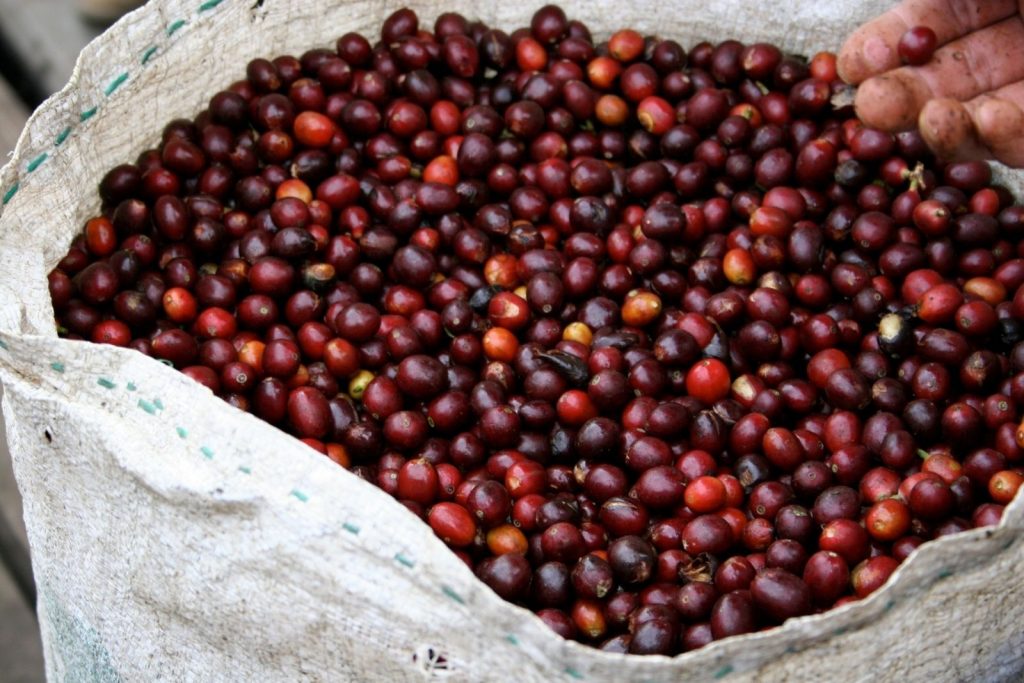
Attitude
Nestled at an elevation of 500m-600m above sea level, the Central Highlands of Vietnam boast rich red basalt soil and a cool, rainy climate—perfect conditions for cultivating exquisite Robusta coffee for centuries. This region’s beans are famed for their potent caffeine content, bold flavors, and low acidity, enticing coffee aficionados worldwide.
Yet, the allure of Central Highlands coffee lies in its unique regional nuances. Some beans enchant with silky notes of butter, oil, or caramel, while others capture the essence of the sun-kissed highlands and crisp mountain breezes. Discover the captivating tastes that have made Central Highlands coffee a cherished treasure for generations.
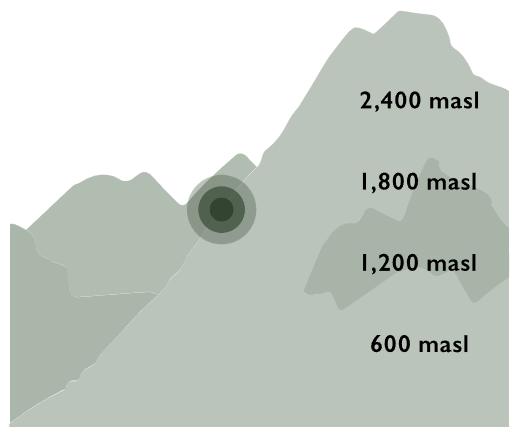
Environment
Climate factors such as precipitation, temperature, and humidity play a crucial role in shaping a coffee’s maturation, overall flavor, and quality. Coffee-producing countries either boast naturally ideal conditions for growth or employ innovative techniques to enhance their ecosystems.
Robusta coffee, in particular, thrives in a harmonious dance with its environment, flourishing under the tender care of nature’s elements. As you indulge in its rich, bold flavors, you’ll savor the exquisite results of this intricate interplay.
Precipitation
500m – 800m
Temperature
17℃
Humidity
71%
Processing
Coffee processing involves separating the bean from the cherry, with popular methods like washed, dry, and honey, among others. Each technique emphasizes different aspects to create unique flavors, inviting you to explore and savor the diverse world of coffee.
Washed
Fully Washed
Dried
Sun-dried
Natural
Fully Washed
Timeline
Harvest and export times are based off when a particular coffee will be at its peak quality. Cherries picked at the start of the harvest season tend to be underdeveloped, and those picked at the end are often overdeveloped, so producers aim for that sweet
Harvest
Export
Dec – Sept
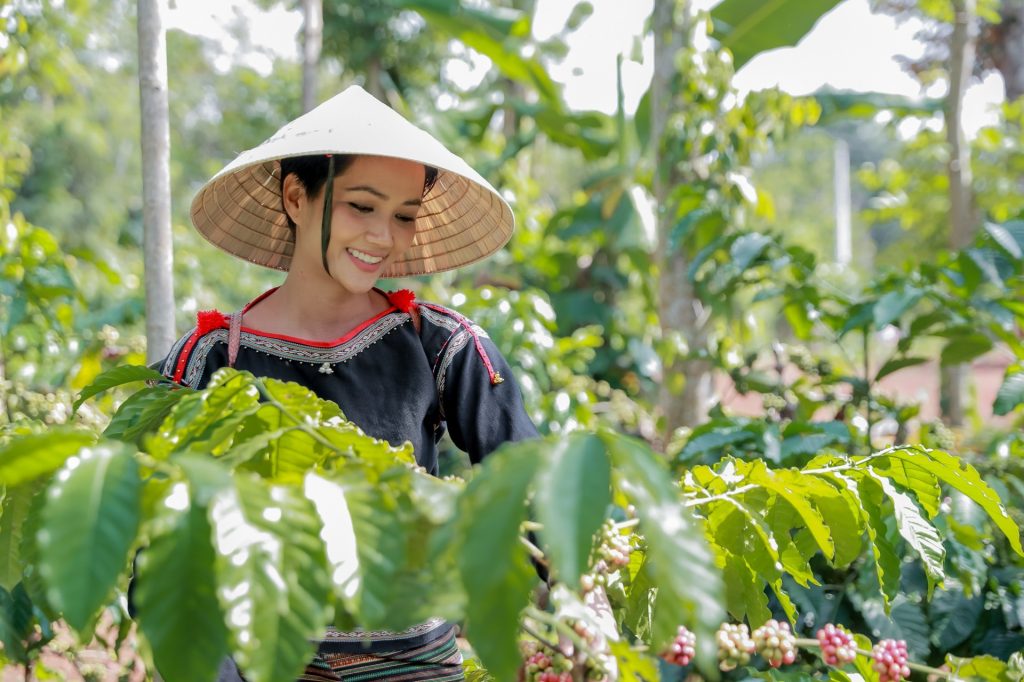
Dak Lak Viet Nam
Dak Lak Province, nestled in Vietnam’s Central Highlands, earns its title as the “capital” of Vietnamese coffee with its sprawling green coffee fields cascading across the region’s basaltic hills, bathed in sunlight and caressed by gentle winds. Home to numerous distinguished coffee brands, Dak Lak’s exceptional beans have captured hearts worldwide, with exports reaching over 80 countries and territories, solidifying its global reputation for exceptional coffee.
